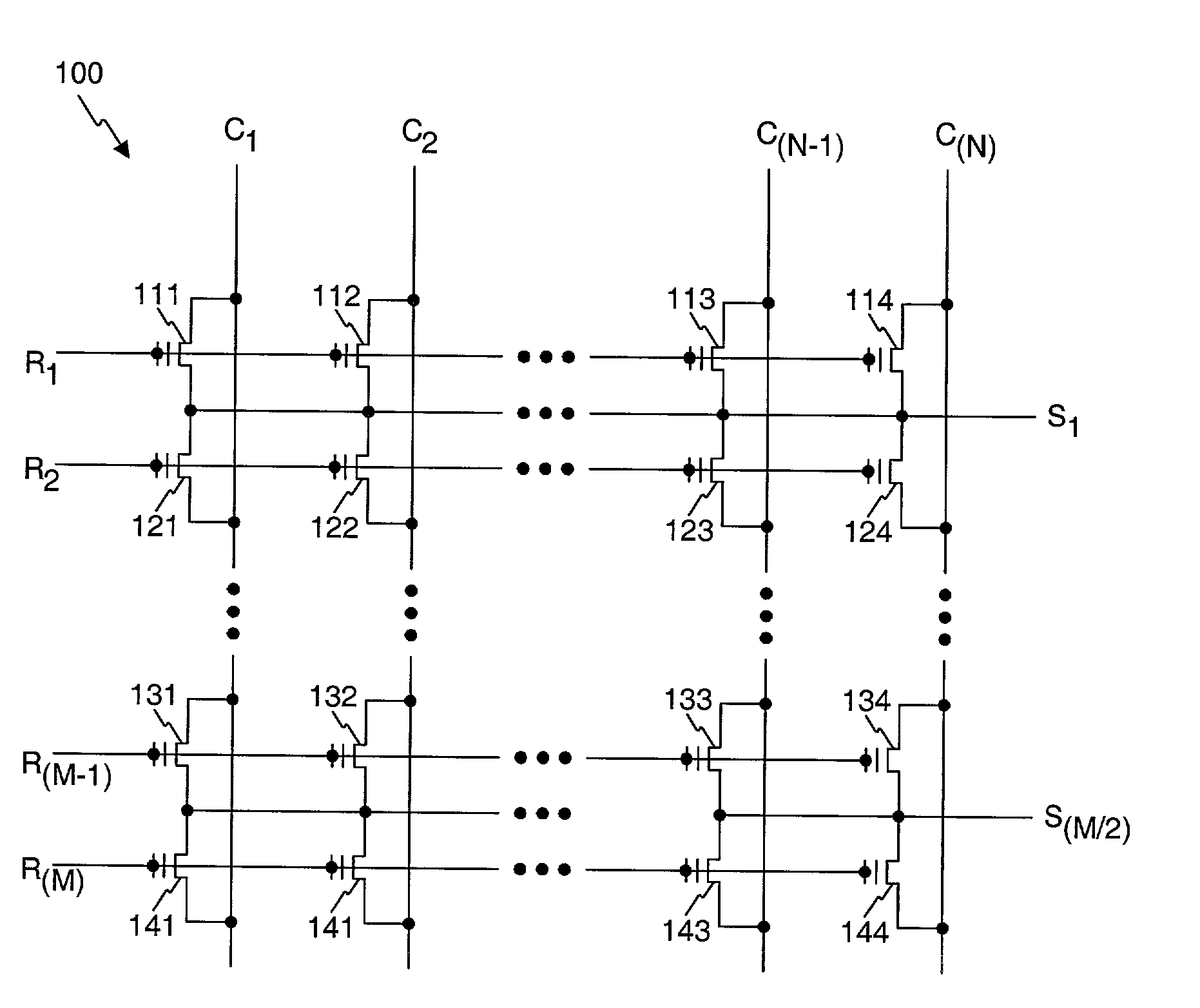Method and apparatus for multiple byte or page mode programming and reading and for erasing of a flash memory array
a flash memory array and programming and reading technology, applied in the field of semiconductor memory, can solve the problems of increasing the size of the memory chip, and slow programming using the fn tunneling from the drain edge to the floating ga
- Summary
- Abstract
- Description
- Claims
- Application Information
AI Technical Summary
Problems solved by technology
Method used
Image
Examples
Embodiment Construction
[0034] EEPROM cells of the stacked gate type shown in FIG. 1 are used in a variety of different types of flash array architectures where they are subject to disturbance of the floating gate potential during CHE page mode programming operations, and may also suffer disturbance of the floating gate potential during read operations.
[0035] A common ground NOR array 100 is shown in FIG. 3. Simplified for clarity, the array 100 illustratively is arranged in M rows and N columns of memory cells, and each individual memory cell 111-114, 121-124, 131-134 and 141-144 is a stacked gate type of cell such as that shown in FIG. 1 but preferably having a halo implant in a manner well known in the art. While a variety of other type of nonvolatile memory cells using floating gates and other classes of nonvolatile memory cells using charge trapping like the MNOS (Metal-Nitride-Oxide-Semiconductor) device to set the threshold voltage V.sub.T of the cell may also be used, the use of the stacked gate ty...
PUM
 Login to View More
Login to View More Abstract
Description
Claims
Application Information
 Login to View More
Login to View More - R&D
- Intellectual Property
- Life Sciences
- Materials
- Tech Scout
- Unparalleled Data Quality
- Higher Quality Content
- 60% Fewer Hallucinations
Browse by: Latest US Patents, China's latest patents, Technical Efficacy Thesaurus, Application Domain, Technology Topic, Popular Technical Reports.
© 2025 PatSnap. All rights reserved.Legal|Privacy policy|Modern Slavery Act Transparency Statement|Sitemap|About US| Contact US: help@patsnap.com



